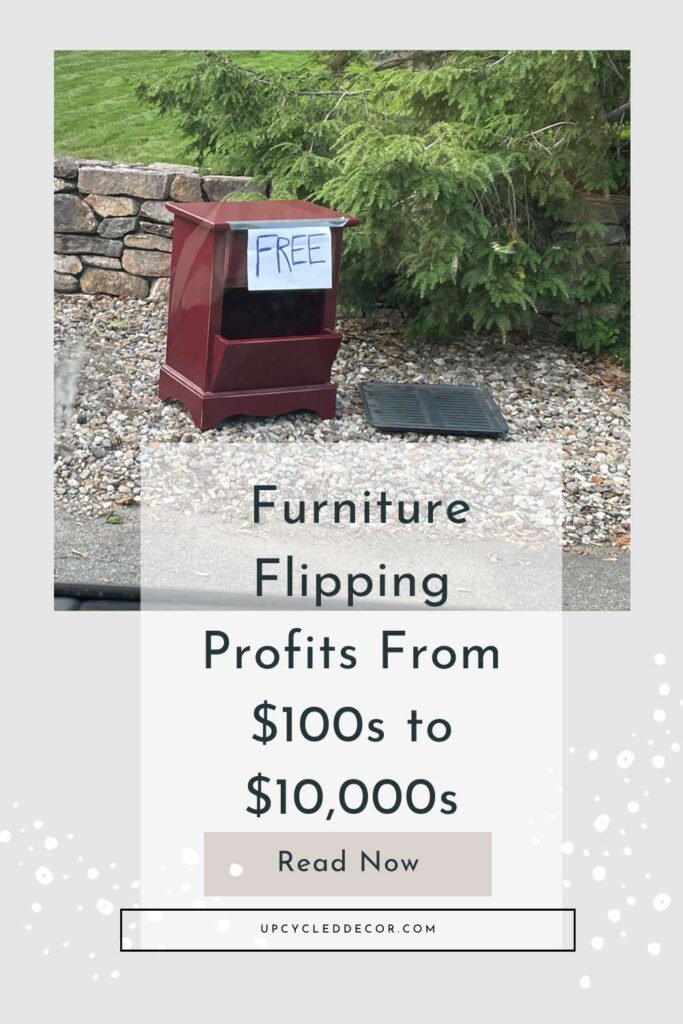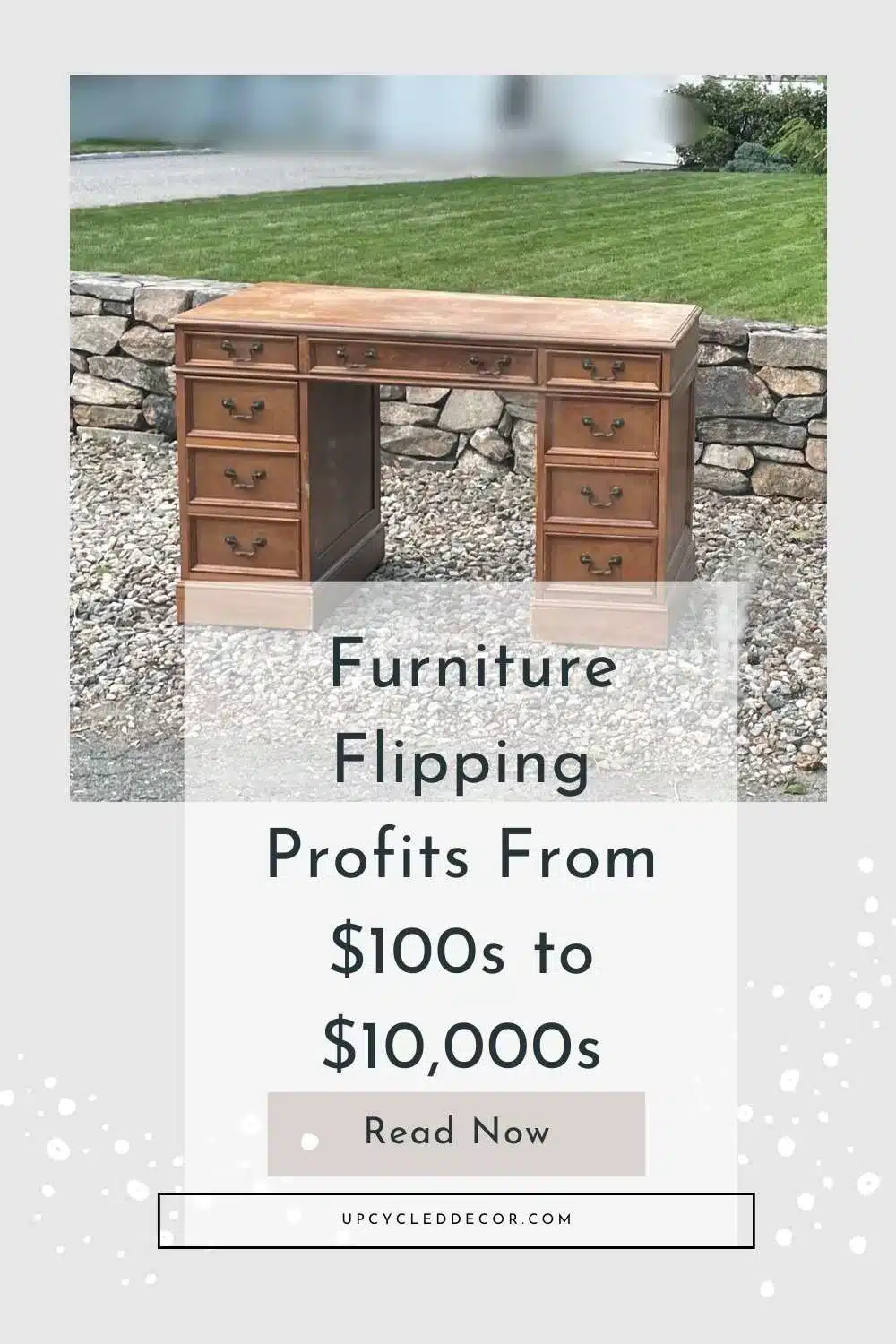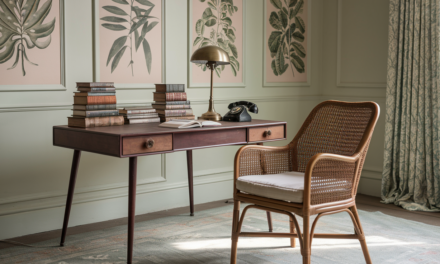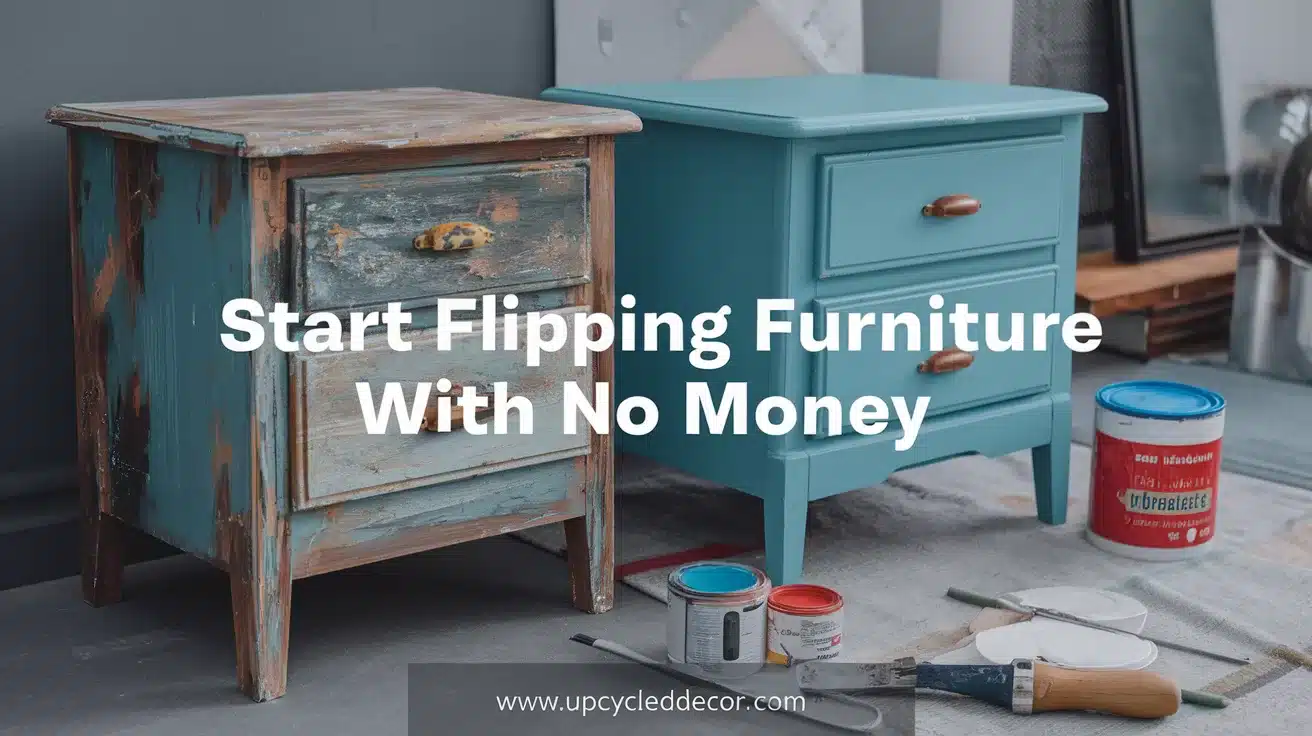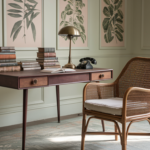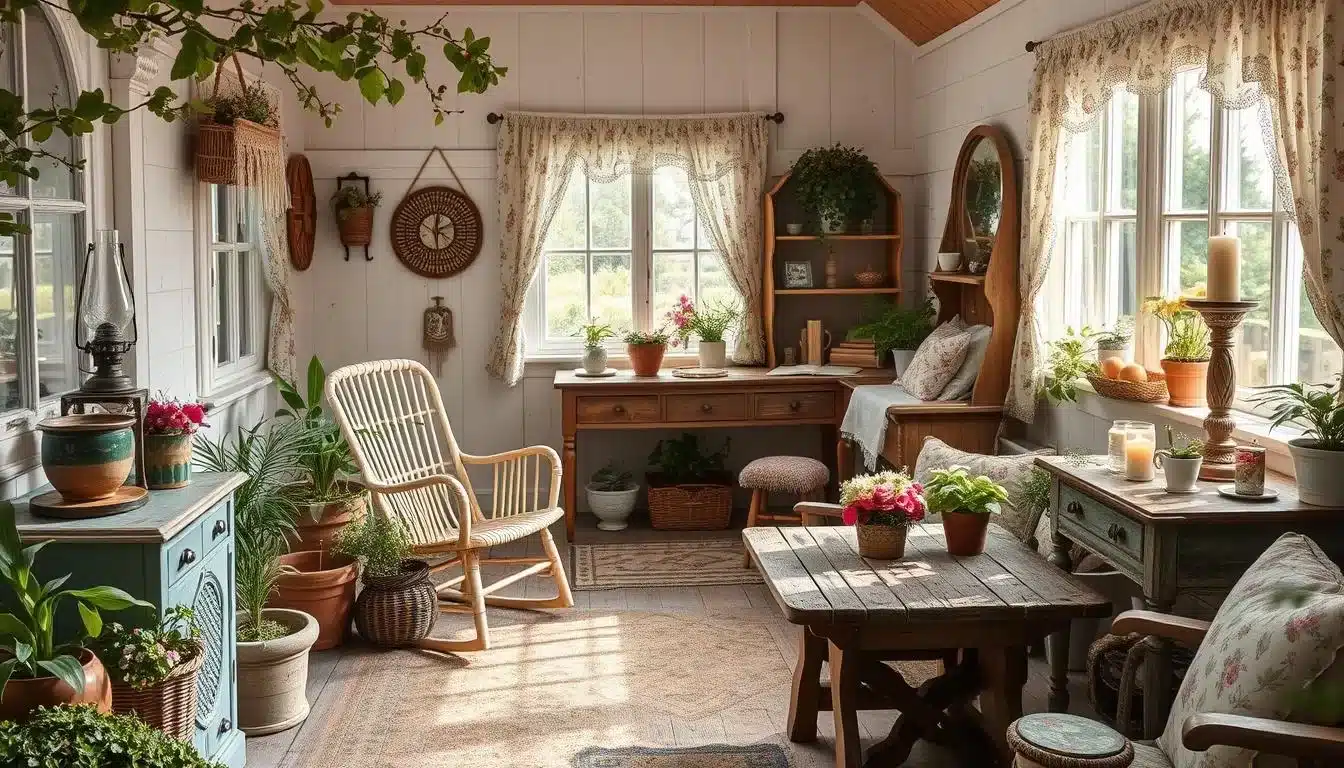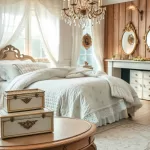This post is about how to make more money flipping furniture and vintage decor.
This post may contain affiliate links, which means I’ll receive a commission if you purchase through my link, at no extra cost to you. Please read full disclosure here.
Flipping furniture and
Flipping furniture and home decor for profit is recession proof.
It’s easy to start a furniture flipping business. That’s the short term advantage. But more importantly, it’s pretty easy to sustain and grow a business flipping furniture and
From scrappy to scaling: Improve profits through specialization and strategy
If you read our post about how to start a furniture flipping business from nothing, then you know how we got started. We found it really easy to make our first $50, and even earning our first $500 took only a few weeks. (And we probably could have done it faster than that.) Within a couple of months, $700-900 per month became typical. At that point, you might think:
If you are going to make more money flipping furniture you have to decide: Is this a side hustle? A paid hobby? Or a business?
This is an important question: don’t just assume that because you’ve seen some profits and momentum that you can or should turn something fun into a business. Think about how you will create more time for it, and what your financial goals are. We had that conversation and decided we were definitely committed to growing. But $900 per month is nice . . .and not enough. So we had to learn to make more money flipping furniture, if this was going to be a real business.
To really explode your furniture flipping sales you need a strategy and a specialty.
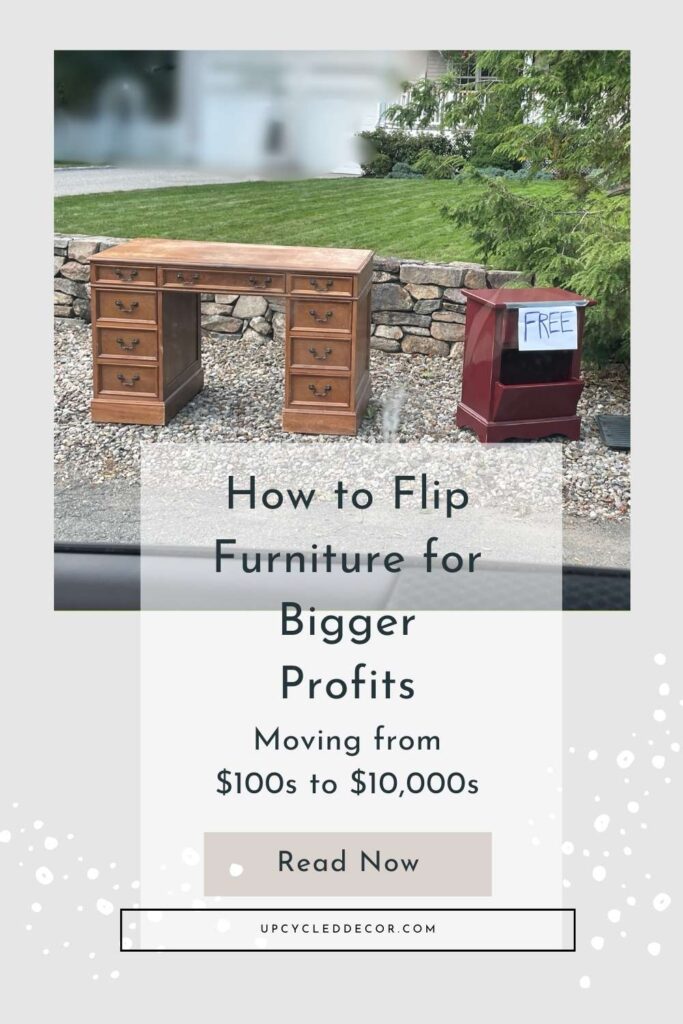
The first part of your strategy is specialization: you can start to focus on certain types of items, or certain eras of products. You might specialize in 1960s dishes and MidCentury Modern furniture. Or, you could focus regionally, such as on Scandinavian design. You can also niche your product offerings: will you be known for high-end Insta-worthy furniture makeovers? Or will you sell vintage decor at a higher volume for a lower price, but faster?
Flipping furniture and
We waste way too much time love to conduct research on Instagram watching people turn dated, stained, damaged furniture into stunning gorgeous pieces. We decided we were going to do that, too. They were regular people once. We’re regular people now. How hard could it be? We studied YouTube videos and bought (secondhand) tools and materials. We learned. And some of it was really fun. Some of it even came out great and sold well. Seriously, we would usually make about a 300% return on our investment, sometimes much more. Until you account for the time it took. And that was the problem.
You do not have to be great at restoring furniture to make money flipping.
We noticed that the return on investment (ROI) was too low for us at this stage, to make money flipping furniture, relatively fast. Learning to restore furniture requires multiple skills. It also requires equipment like saws, a shop vac, sanders, stains, strippers and oh so much time. We could see the path. We flipped chairs that were curbside finds ($0) and re-upholstered them with a thrifted shower curtain ($3) that we upcycled. We sold those chairs for $100. That margin was incredible, and we were hooked. Until we accounted for our time.
Here’s the challenge: if you bought a decent set of chairs for $20 and then did a makeover at a really professional level, you might make $500. Maybe you could even make $1000. But the time value of money feels like it’s working against you when you start to do serious, full furniture makeovers, if you’re trying to build growth fast.
We fully believe (and love) that people are making very good money with those amazingly restored furniture. The point is just to be clear–we don’t. And you don’t have to, either. We think it might be easier–and faster–to make more money flipping furniture at this point by focusing energy on a balance of items. In fact, if you make money faster, you’ll ultimately create time to focus on full makeovers if you want.
Furniture maintenance, not furniture makeover, might be a better strategy to make more money flipping furniture faster
We were willing to play a long game, but we wanted to lean in to other opportunities that we thought might be a better hourly rate for our time. We noticed that just touching up solid wood furniture increased the value really quickly. For example, we found these scuffed up but structurally sound pair of barstools at the thrift store for $15. We literally spray painted them with a can of black paint, and they were basically like new.
We sold them for $50. It took us about 15 minutes to paint the stools, and then we did other things while they dried. All in, it was probably 30 minutes if they needed a second coat. If you could do two pairs per hour (and you could) at a profit of $35 for each pair, that’s $70 per hour. Properly organized, we could do a third pair in an hour. That’s $105 per hour. Unlike a full furniture makeover, you can scale this quickly.
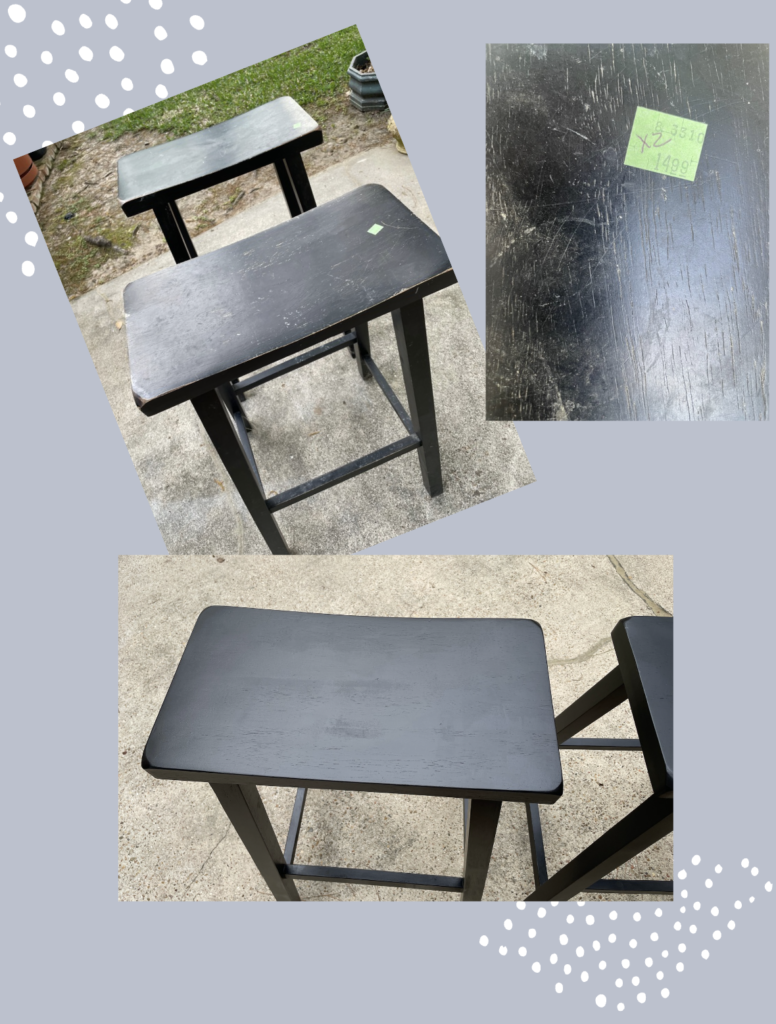
Vintage home decor : your niche doesn’t have to narrow, just consistent.
The other thing we did was increase our
Functional decor and decorative storage: sell vintage home decor that is beautiful and useful.
Vintage is almost always better than recent. Choose vintage decor to sell that is either highly valuable, very rare or unique–when you can get it at a reasonable price. To make money selling
Something usable as is or that can be upcycled into something usable, is better.
People can justify things that have purpose: vintage bookends or glasses or mixing bowls. Purely decorative items tend to take longer to sell. People don’t need inexpensive wall art. It’s hard to say if it’s “worth” the price you’re asking. They don’t need it, so they ask about it then flake, or cancel because something came up. Fill a need, not a want. Furniture tends to be this way by nature: we need a bed, a table, a nightstand. Choose
For example, we found a vintage cast iron dog bed on a curbside find run. We put it on Marketplace and the listing absolutely exploded. The person who ultimately bought it came from the other side of town, almost two hours round trip. We asked what kind of dog she had. “I don’t have a dog. I’m using it as a plant stand in my backyard.” So that happened.
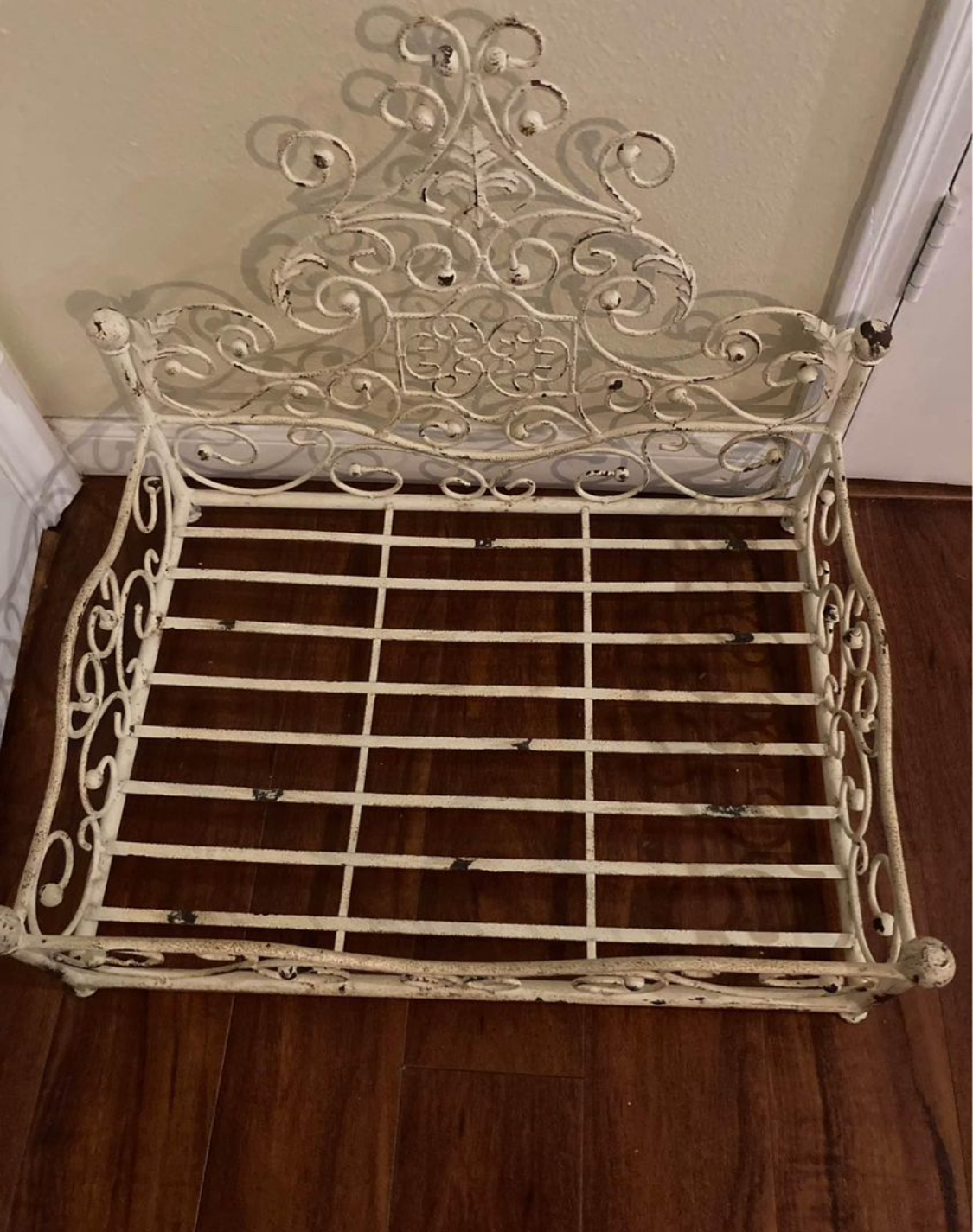
That made us start checking garage sales, estate sales and curbside finds for planters. Since one of us is a huge plant person, we knew that plant people are very attached to their plants planters. The nicest, largest ceramic planters go for hundreds of dollars. So people will pay a lot for secondhand planters, because even $50 to $75 is reasonable compared to new. And if they are outdoor planters, they don’t mind nicks or scratches or wear. That’s especially true if they are interesting or vintage. It’s part of the aesthetic.
Want to know more about selling vintage decor for profit? Check out our article here.
More scale, less scrappy. Streamline your process. Upgrade your systems.
Upgrading Your Supplies and Software
As your business grows, upgrading your tools and systems becomes essential. You may need to start investing in better and faster tools to improve efficiency. For example, we purchased a specialized Dremel tool with attachments that helped us sand intricate details more quickly, which saved us hours of work. Even though we still didn’t plan to do a ton of restoring, when we did need to quickly sand something detailed, it now was much faster.
In addition to physical tools, upgrading your systems will be vital to make more money flipping furniture.
For example, inventory management is crucial as you scale. We initially tracked our inventory on a Google Sheet, but once we reached 100 items, it became cumbersome. By 200 items, it was absolutely miserable unmanageable. We upgraded to Airtable, and it was a game changer. We could easily add tags that marked where we bought it, how much we bought it for and how long we held it before it sold. At any given time we have over 1000 items and there’s no way we could Google Sheet back to sanity.
We also started using Vendoo we could cross list products faster. In fact, it also made it easier to dabble on platforms we weren’t on. (You will need to start experimenting to keep improving growth.) That’s because using Vendoo let us quickly test listings on new platforms without wasting a lot of time manually entering onto each one. Also, Vendoo has a free program (hey, we’re cheap) that will let you try a few products before you commit. Be sure to click on monthly pricing to find the free version. But even the paid version starts at less than $10 per month.
Documenting and tracking patterns in your sales is key to making money more efficiently.
As you begin to focus on how to make more money flipping furniture you’ll realize that you can’t scale doing things the way you did in the beginning. That’s totally normal: you don’t know what you’re doing, or if you’ll even like it. You’re basically practicing flipping, not doing it at a high level. That’s why our post on how to start a five figure business flipping furniture is really different from how to grow from a few hundred dollars to a couple thousand per month. Once you’re making close to a thousand dollars per month, month after month, you should notice some trends. Try to implement those trends. That plant stand experience turned out to be a consistent trend for us. We keep track of what kinds of items sell fast, get lots of interest, and make a decent profit.
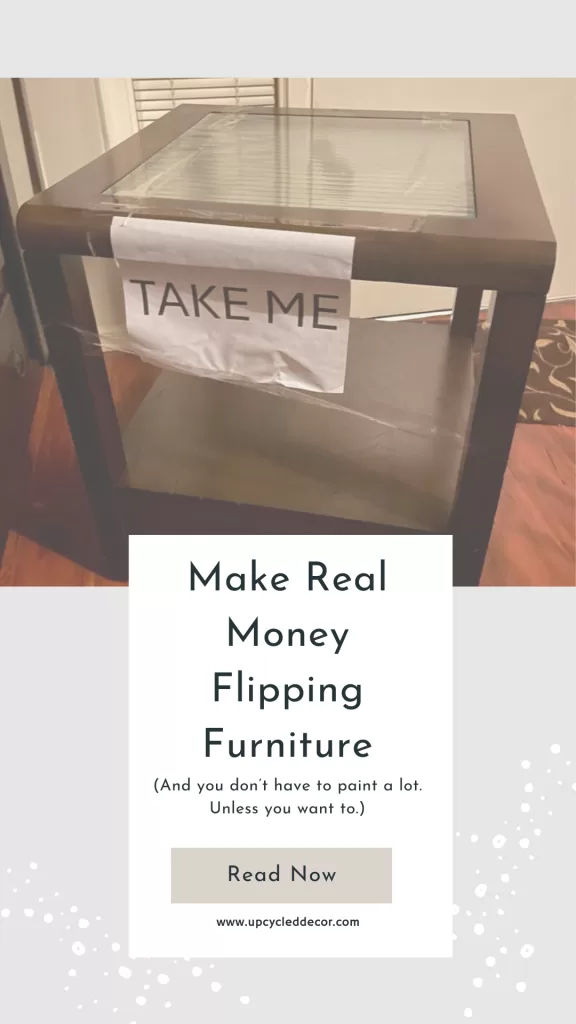
Don’t forget to share and save!
Try different platforms to extend your reach and reduce dependencies
If you’re currently selling through one or two local marketplaces like Facebook Marketplace or NextDoor, it may be time to expand. Consider setting up an online store on platforms like Etsy or eBay. We don’t recommend setting up your own website. It’s just a ton of work, and sites like Etsy or eBay bring you a built-in customer base and a faster (faster but not fast) and easier (easier but not easy) way to list items and sell. Shipping furniture can be both expensive and labor-intensive, though. We decided to only ship vintage decor online, not our furniture.
But all of these decisions go back to the earlier point about understanding how you want to specialize. Different types of products perform better on different platforms, so do your research to understand where your items will sell best. For us, vintage plant stands sell better on Facebook Marketplace, vintage handbags on Poshmark, and vintage
Also, the more platforms you have the less risk any one of them carries. In the beginning we did all of our furniture and vintage decor flipping on Marketplace and OfferUp. Then there was a glitch and we couldn’t get into OfferUp for almost a week. That was half our sales channels! That’s fine if it’s a hobby, but not once you’re running a business. We recommend being on three to five platforms.
Customer Reviews: good for humans (and algorithms, too)
Positive reviews can significantly boost your credibility with customers. Encourage satisfied customers to leave reviews on the selling platform or your social media. Everyone relies on customer reviews these days, and the furniture flipping business is no different. The more good reviews you have, the fewer people will stop and wonder if you’re legit, if your items are what they say they are, etc. But reviews aren’t just good for people.
Most selling platforms run on algorithms that reward sellers with lots of good reviews.
Obviously, we love that we make actual humans happy. But the truth is, we also love that it feeds the algorithms. A lot of reviews means a lot of sales: more traffic you bring to the site. But lots of good reviews also means people are buying from you. That improves and maintains the reputation of the platform. Most people know that Etsy promotes shops with lots of sales and good reviews. But don’t forget that’s true of all of them, even if they don’t award you as a star seller. So keep everyone happy, real and artificial.
With consistency and strategy, you can make more money flipping furniture and grow to a five-figure business
Scaling a furniture flipping business from earning a few hundred dollars to tens of thousands isn’t easy, but with the right strategies, it’s definitely achievable. Create a strategy, specialize what you sell and where you sell it, streamline your processes, expand your market and love your customers. Most importantly, don’t fear mistakes: it’s part of the path to profits.
This post is about how to make more money flipping furniture and vintage decor.
More articles:
Read about fast and easy furniture makeovers to build your furniture flipping business.
Learn how to get curbside finds that will help you get started flipping!
Try this fast and easy wooden chair makeover using upcycled shower curtains.
Please share and save this article!
